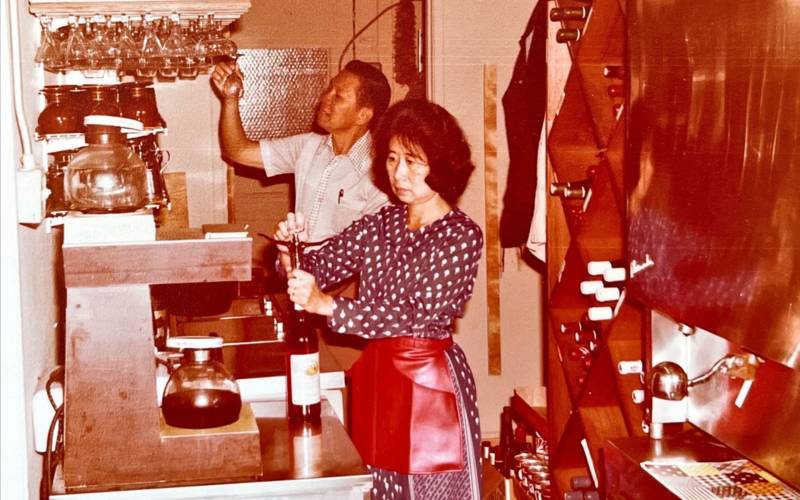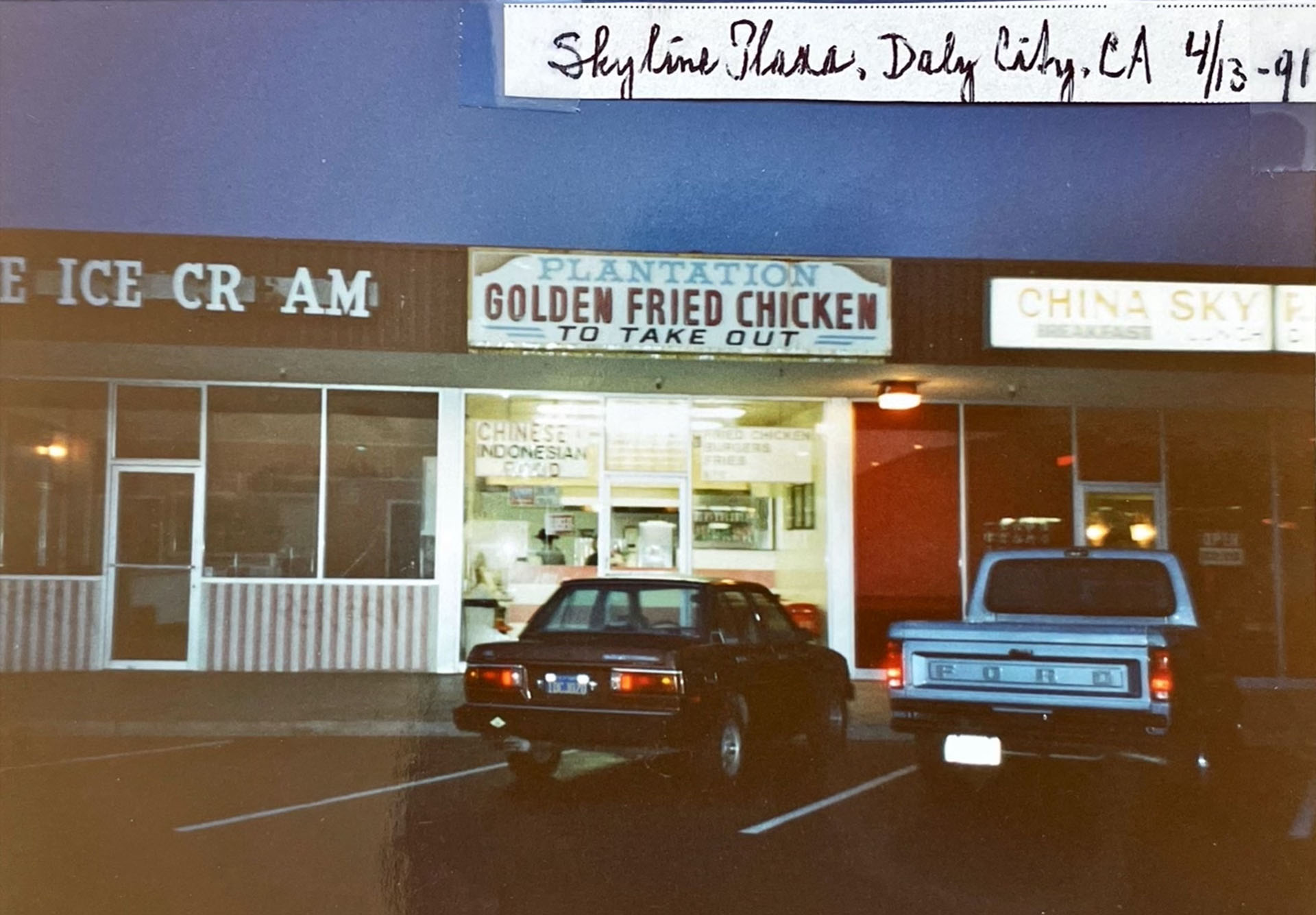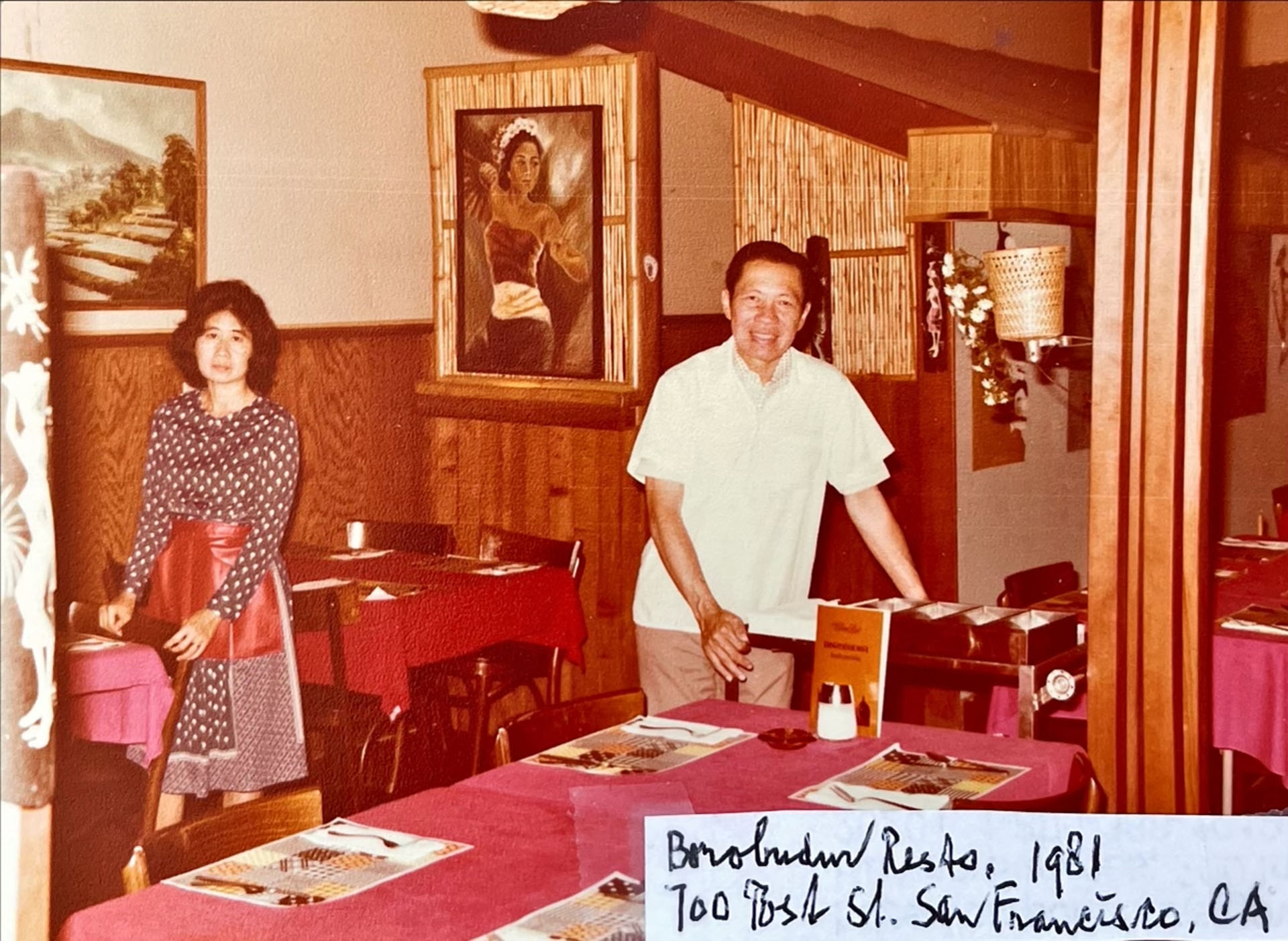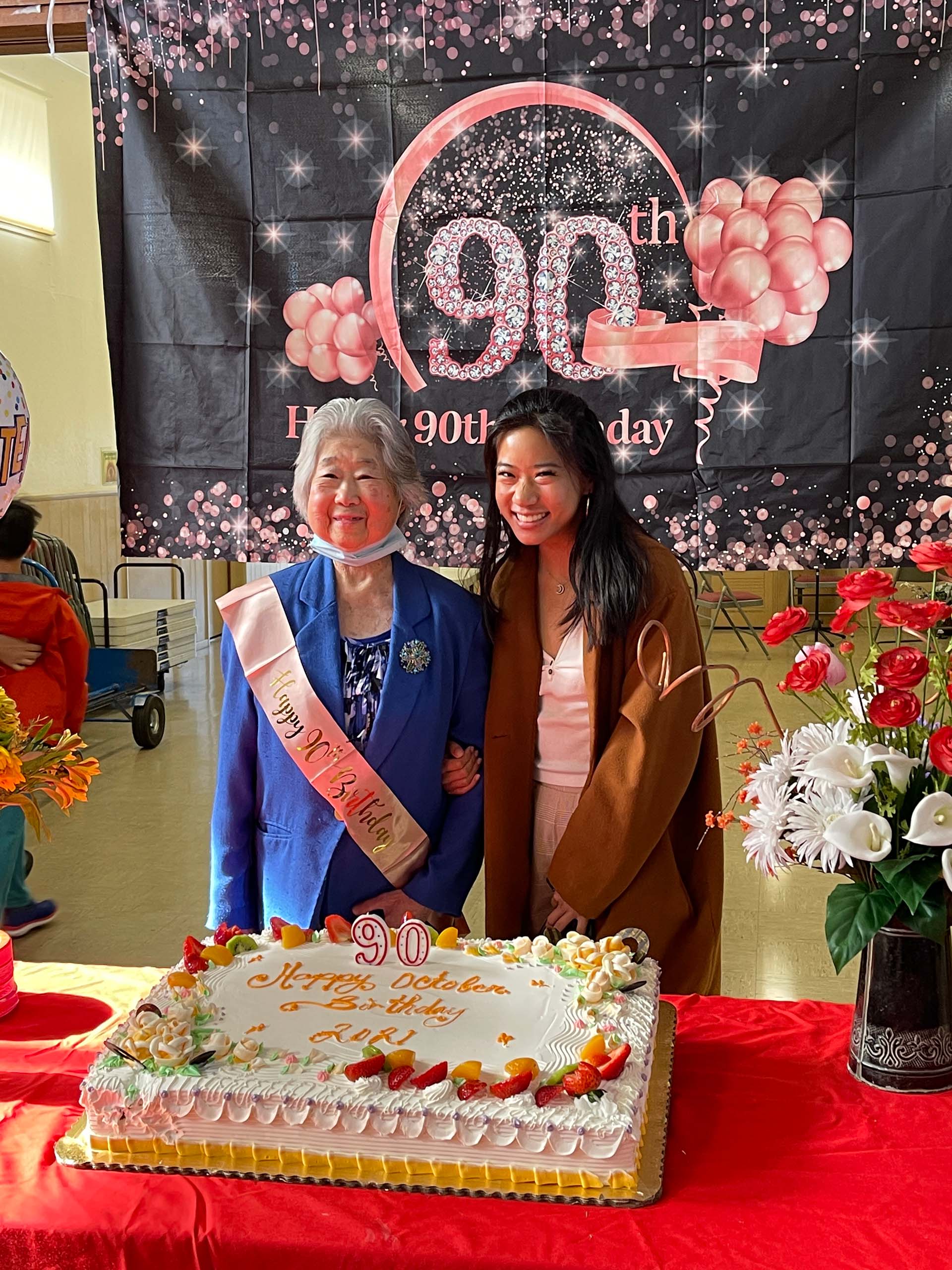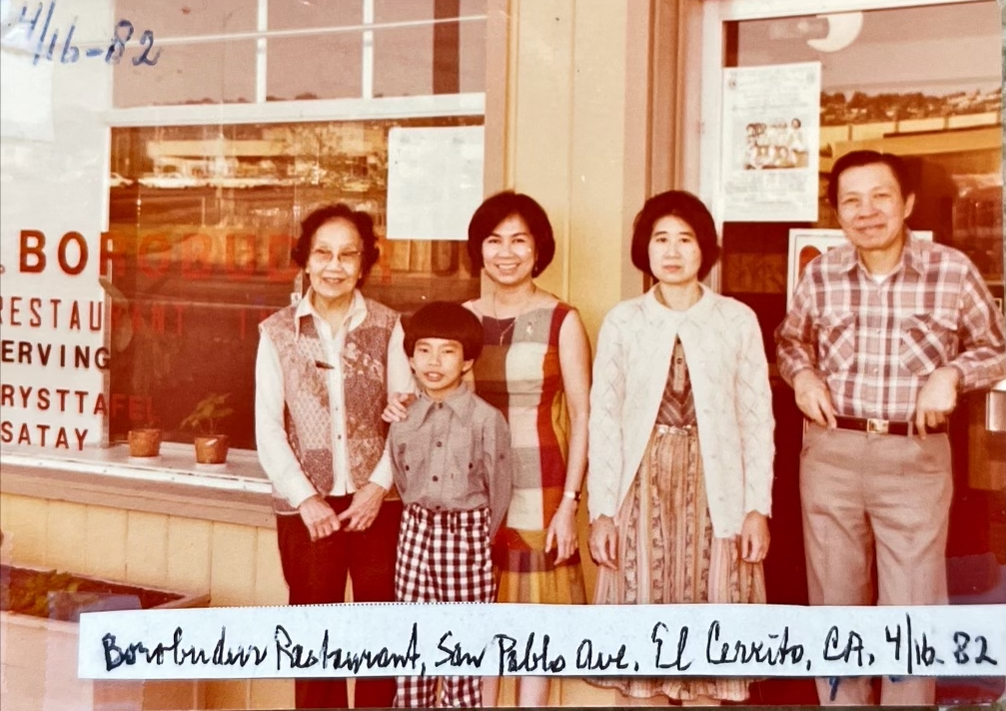M
y childhood trips to the Bay Area were a chance for my family to revisit old haunts. Whenever my dad would drive us down the long strip of highway from Sacramento to San Francisco, he would point out every memorable cue through the car window. “That’s the hospital you were born in” or “I used to come here for shakes and soft serve” or, my favorite, “that’s where your grandmother’s old restaurant used to be.”
In fact, my grandmother, Helena Lomanto, was one of the Bay Area’s very first Indonesian restaurateurs — though I didn’t know it at the time.
That restaurant we’d pass by is now Waikiki Hawaiian BBQ, a humble takeout facade on San Pablo Avenue’s El Cerrito strip. I know it best from old pictures, where my grandmother’s signage displayed the name “BOROBUDUR” in all caps. Inside the restaurant was a takeout counter and pink laminated menus. Served hot and fresh: ayam goreng, or thinly battered fried chicken with sambal goreng on the side, and a variety of rice plates and vegetable stir fries. Like many Asian restaurants in the Bay Area during the ’80s and ’90s, the menu was a mix of timeless classics like bakmi goreng (an Indonesian take on Chinese chow mein) and more fusion-y, Americanized flavors.
My grandmother loved to tell me stories about her days in the restaurant and how she learned about the business when she first immigrated stateside and worked as the lettuce slicer at Burger King. Soon enough, she and my grandfather would open not one, but three different Chinese-Indonesian restaurants in the Bay Area — one in San Francisco, one in El Cerrito and yet another in Daly City.
